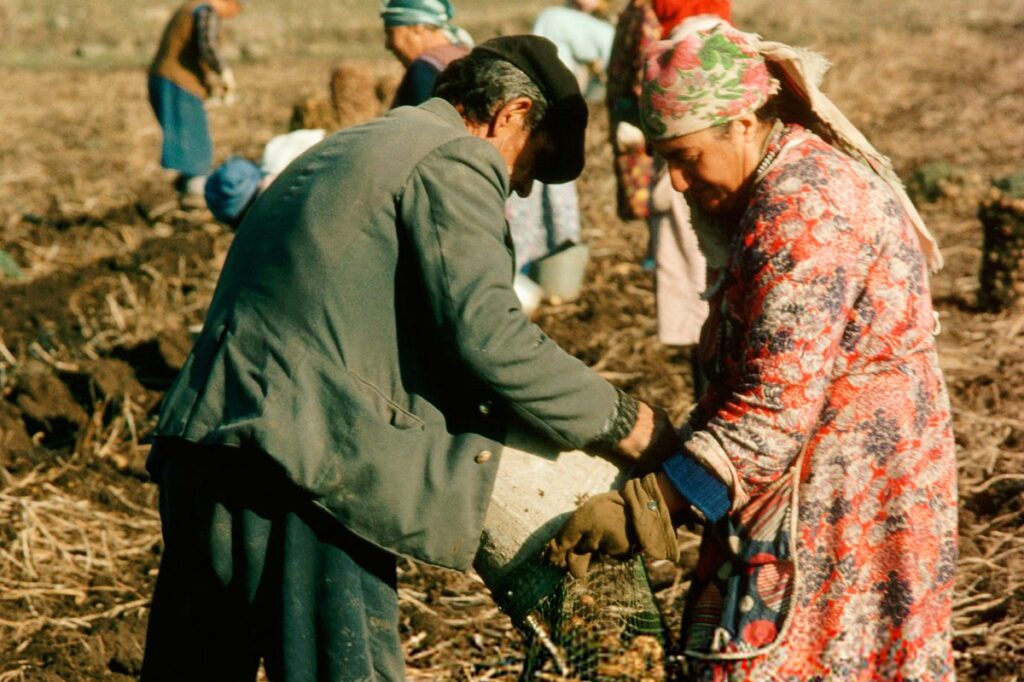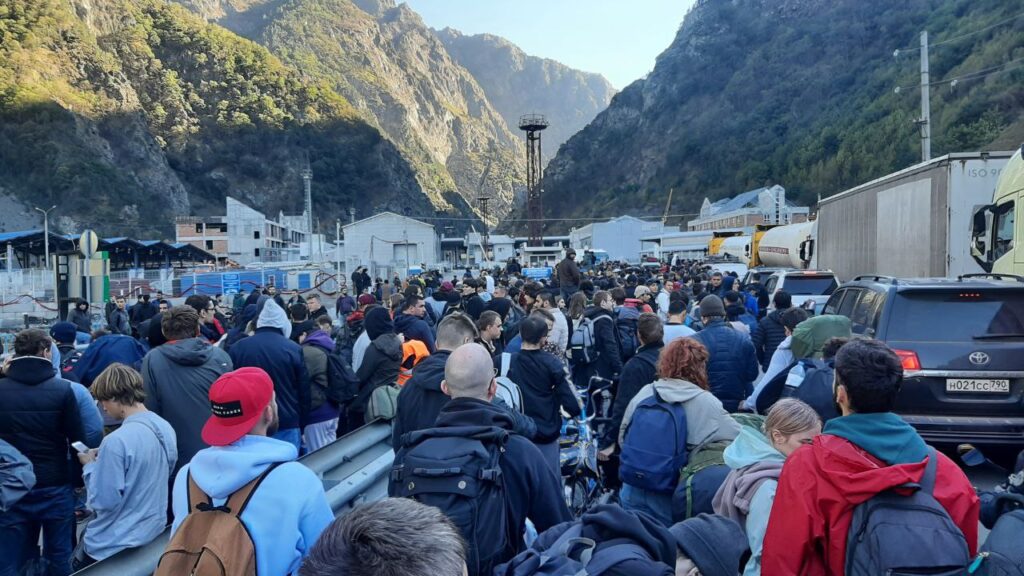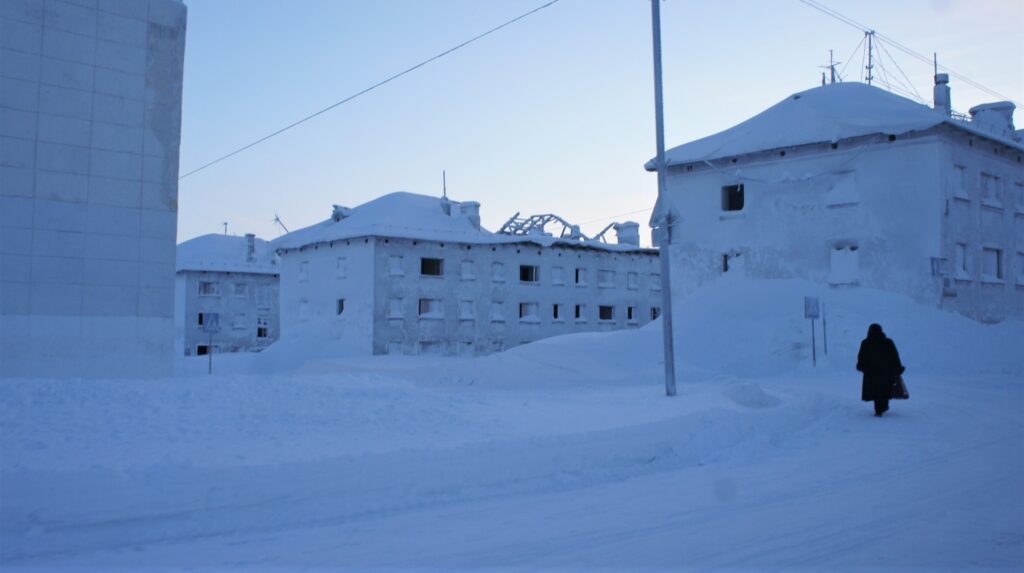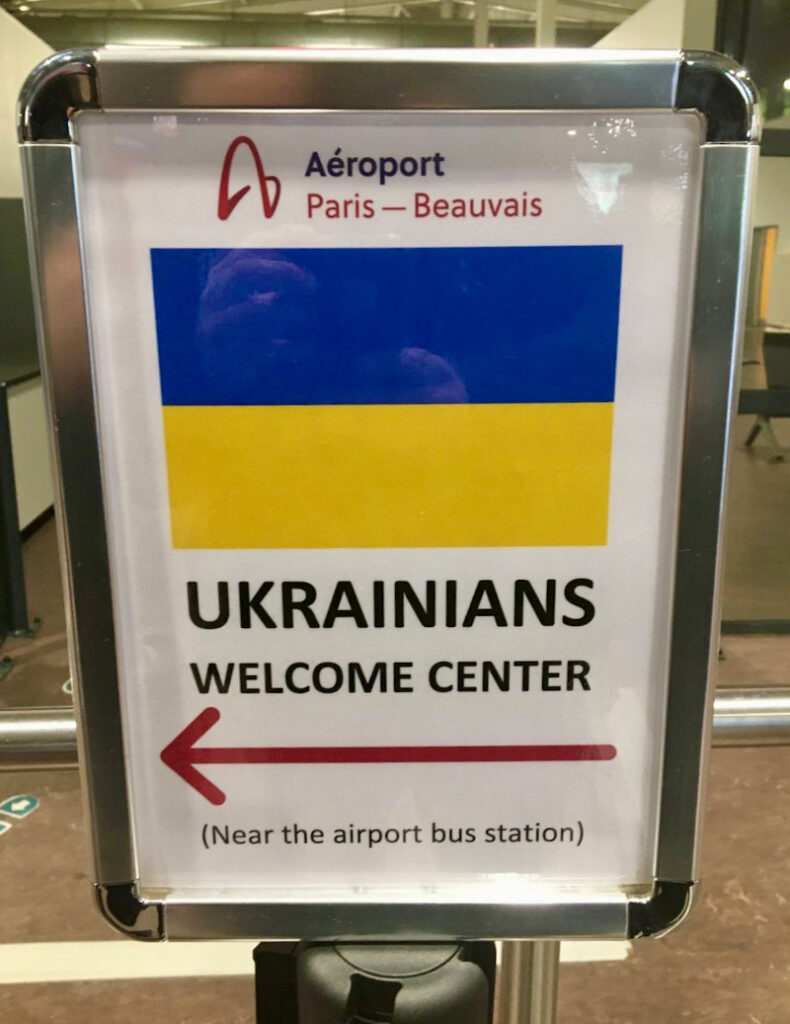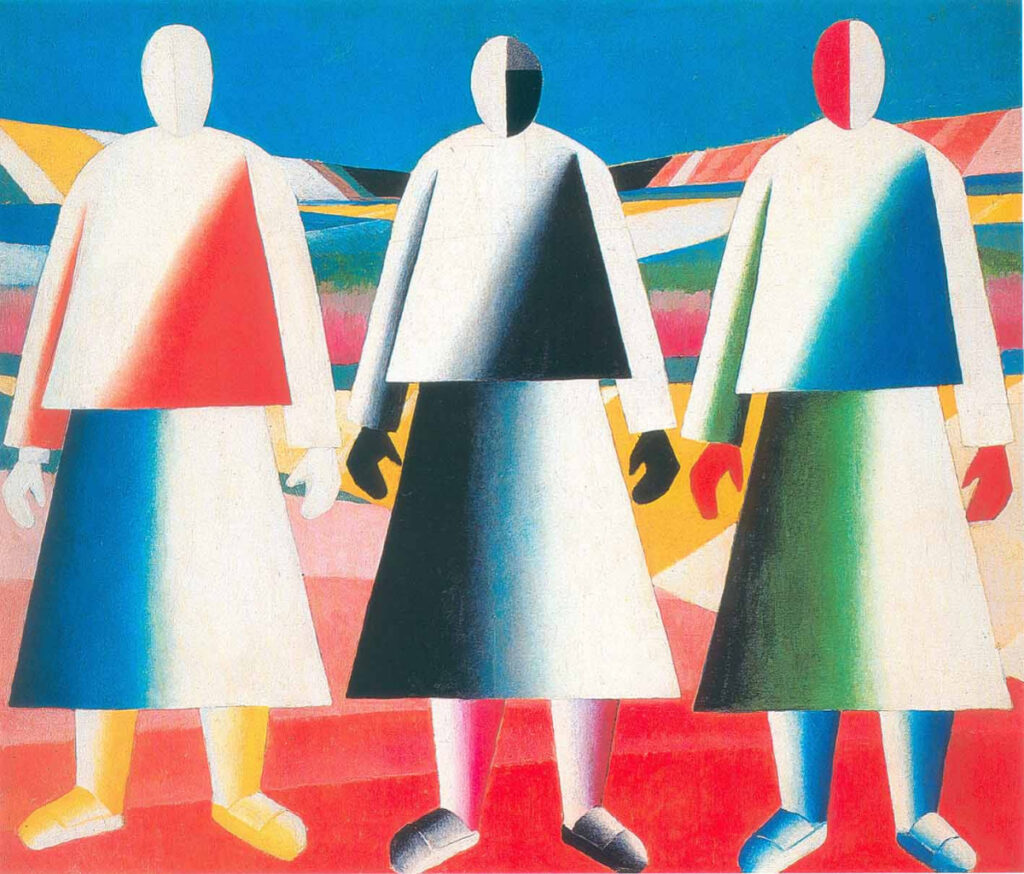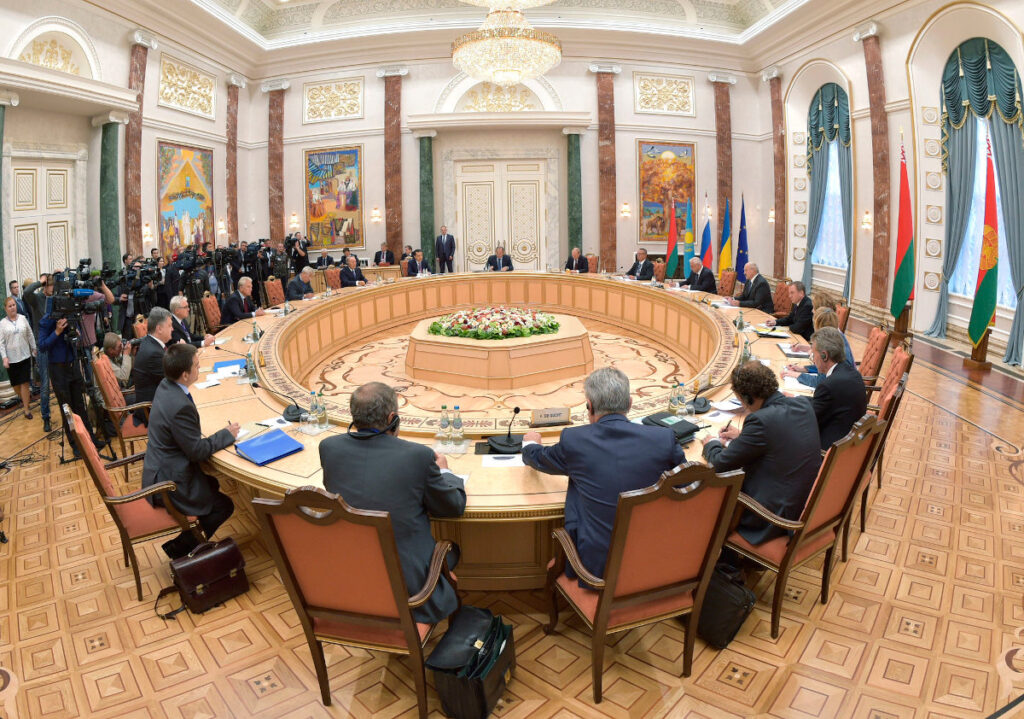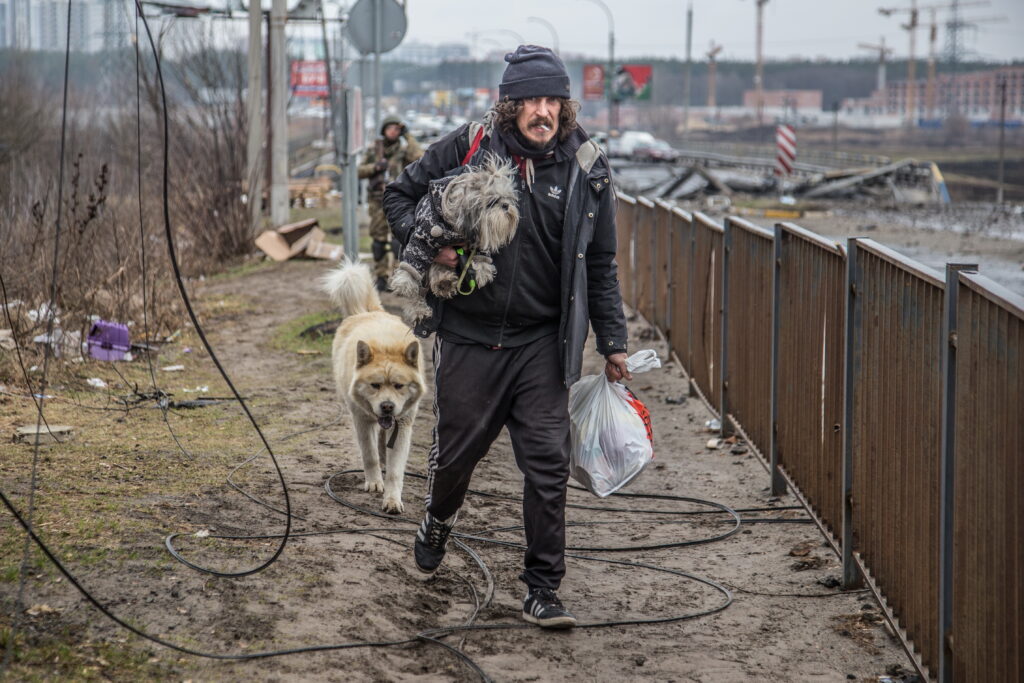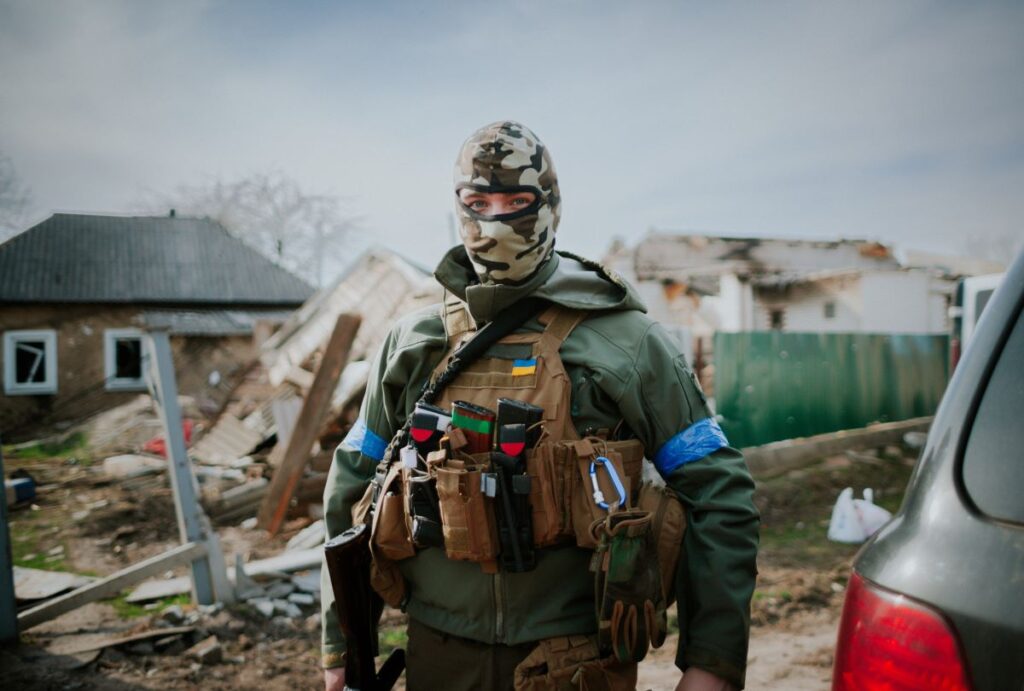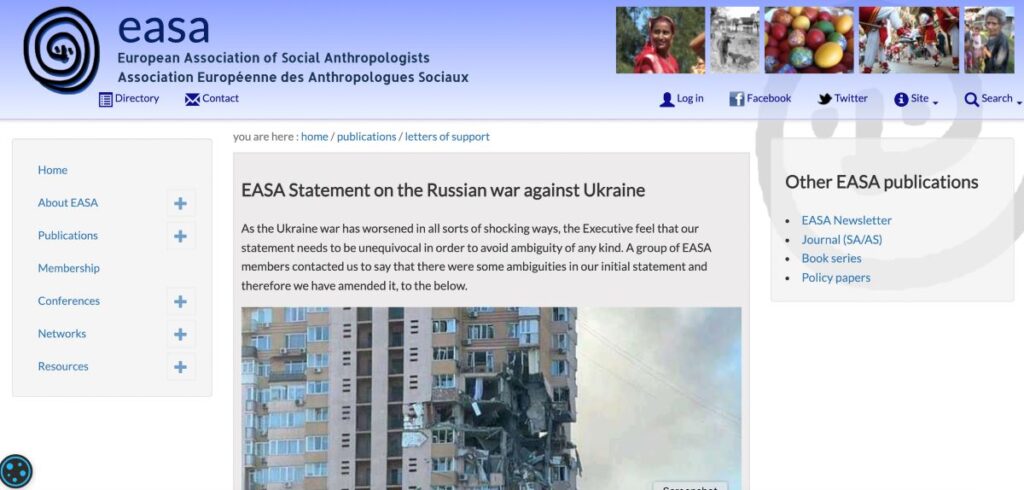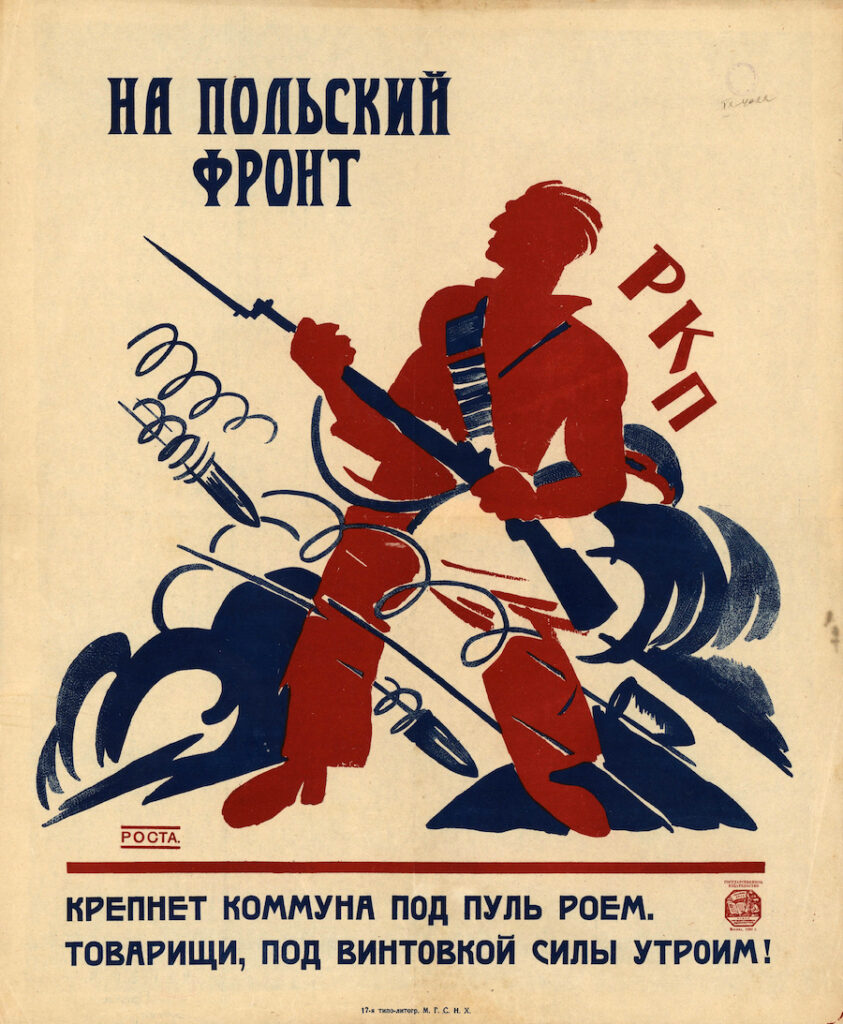Strategic Ambivalence or Disguised Conflict? China’s Reactions to Russia’s War on Ukraine and to Covid
Why does China’s response so far to the Russian invasion of Ukraine “not add up”? On one hand, China has refused to condemn the Russian invasion of Ukraine, has pushed its own state-controlled media to promote only pro-Russian propaganda, and even republished false reports by the Russian state media. China abstained from a UN Security Council resolution in March 2022 that condemned the Russian invasion. Meanwhile, the Chinese Foreign Minister Wang Yi recently announced that China and Russia “will always maintain strategic focus and steadily advance our comprehensive strategic partnership of coordination for a new era,” especially in the energy trade (Quoted in Torigian 2022). And it is an open secret that Xi Jinping gave his assent – or at the very least knew and did not demur – when he heard of Putin’s intention to invade Ukraine during the latter’s visit to Beijing at the recent Winter Olympics.
On the other hand, the same article notes that President Xi Jinping of China said that he was “pained” to see “flames of war reignited in Europe.” While not condemning the Russian invasion, China has not actively supported it, and instead has called for peace talks and “maximum restraint” (Torigian 2022). It has appealed for all parties to respect pre-existing “sovereign” borders. Nor has China so far provided much economic support to Russia, other than continuing their long-standing trade in oil and gas – nor given any military assistance. And the Asian Infrastructure Investment Bank, in which the PRC holds 27% decisive voting power, halted its work in Russia and Belarus in protest at the invasion of Ukraine (Torigian 2022). What’s going on?
What appears to be ambivalence or failure of the Chinese state to “get its act together”, its confused or contradictory messaging may actually reflect an internal lack of consensus toward the Russian invasion and occupation of Ukraine at the top of the PRC leadership. It may also indicate a current shift in the balance of power within the Politburo of the Chinese Communist Party – away from the extraordinary concentration of power by President Xi Jinping toward a willingness by other members of the Politburo to impose limits on it after his probable reelection as CCP General Secretary at the Party Congress held later in 2022. There are signs of profound dissatisfaction within these top Party circles, reflecting broader economic, social, and political contradictions within China that have emerged over the last years, as Xi has consolidated his increasingly autocratic rule, undermined adversaries, and done his part to destabilize détente with the EU and the United States.
George Soros recently went so far as to say that Xi may not be reelected to a third term as President at the Twentieth National Congress this fall. Soros stated, “Contrary to general expectations Xi Jinping may not get his coveted third term because of the mistakes he has made. But even if he does, the Politburo may not give him a free hand to select the members of the next Politburo. That would greatly reduce his power and influence and make it less likely that he will become ruler for life” (Ren 2022).
Then, the day after Ren’s report for Bloomberg.com, we read in the New York Times of Premier Li Keqiang’s recent speech that implied (if not explicitly so) that Xi’s “zero Covid” policies have led to a catastrophic slowdown in the Chinese economy – during the first three months of 2022 there has been a decline in the Chinese GDP rate of growth to 4.8%, well below the official target of 5.5%. This has been precipitated by a two-month lockdown ordered by Xi that brought the everyday life and economic activity of an infuriated population of Shanghai to a standstill for more than two months, as well as episodic lockdowns in other cities which stopped assembly lines, trapped workers, interrupted the movement of goods and confined millions of Chinese to their homes. At a teleconference to more than 100,000 officials across China, Li announced “We must seize the time window and strive to bring the economy back to the normal track” (P. Mazur and A. Stevenson, New York Times, May 26, 2022).
The key message to take home from this is that China’s #2 highest ranking official has just stepped out in public to implicitly criticize the Covid lockdown policies mandated by China’s #1 highest ranking official – President Xi Jinping. There are certain things that are unforgivable in the contemporary PRC, and Xi’s and his faction’s single-handed slowing of the country’s economic growth may be one of them. Whether this is the first step to Xi being ushered out the door to an honorable retirement rather than being reelected to a third presidential term remains to be seen.
Theoretically, this example points to the importance of investigating the contradictions of illiberal Chinese capitalism that characterizes the corporate Party-oligarchic state in which it is situated.
Deconstructing Socialism’s Deconstruction, Chinese Style
Are (post-) socialist states fundamentally alike? The Chinese Communist Party and its leading intellectuals in the years in the 1990s gave this question much thought. Shambaugh (2008) demonstrates the careful attention after Tiananmen in 1989 with which high-ranking CCP cadres and intellectuals (e.g., from the Chinese Academy of the Social Sciences, and the Central Party School) observed the changes arising from liberalization and “shock therapy” in Eastern Europe and the Soviet Union. They observed the dogmatism of the Soviet nomenklatura, the overreliance on heavy industry, the neglect of agriculture, and the militarization of the national economy with great interest, and reflected on this as they witnessed the USSR’s fall (Shambaugh 2008:41-86). From these observations, they drew lessons concerning the maintenance of the CCP’s power in China. Li Jingjie, director of the CASS Soviet-Eastern Institute, for example, distilled several of these: “Concentrate on productivity growth,” “be ideologically flexible and progressive,” “seek not only to strengthen confidence in the power of the state [but], more important, [the] material living standards of the people,” among other insights (quoted in Shambaugh 2008:76).
A Post-Socialist Developmental State with Chinese characteristics
What came out of these deliberations of the CCP in the late 1980s-1990s? In particular, unlike the Central and Eastern European late socialist countries, the highest circles of the CCP were determined that the party continue to maintain its ruling position within the state apparatus and organize the national economy, rather than give way to neoliberal penetration by graduates of the University of Chicago School of Economics, and those of similar ilk (Bolesta 2015:230-244). China’s post-socialist developmental state trajectory has been similar to those of earlier capitalist states (e.g., 19th and 20th-century western Europe, the United States), while very distinct from the post-socialist political systems of Eastern Europe and Russia. Unlike what occurred in these countries, “retaining an authoritarian state was also aimed at creating a strong and capable state… the authorities have attempted to strengthen power and control… over society and the business sector” (Bolesta 2015:232). This has allowed for a gradual and highly planned set of state programs for evolving from a socialist to a capitalist economy.
Being authoritarian and illiberal, however, is not the same as being unaccountable to the “masses” of the working class, rural peasants, and since the early 2000s, the new urban professional managerial classes of China. The “attentive” party-state (Perry 2012) is above all attentive to maintaining its legitimacy among the rural population subject to dispossession, and increasingly among the growing urban middle classes and professionals whose numbers form the new base of the CCP. Largely, as one might expect, the CCP above all seeks to maintain and increase the standard of living of both the rural and urban populations, ameliorate the environmental disasters that afflict millions of affluent urban residents, and pay specific attention to the protests of thousands of small farmers dispossessed from their land and striking workers exploited in the industrial workplaces. The party has ultimately been willing to bend when large numbers of residents display the capacity for disorder and discontent in public, led by leaders willing to face down beatings by police and to travel to Beijing to petition central cadres and high officials in ministries to redress the injustices committed against them by corrupt local officials. Responsive, yes. Democratic? Not so much.
Morphing into the Chinese Corporate Party-State
The Chinese Party-state takes the form of a corporate-oligarchic structure in that the CCP simultaneously acts as a coordinated body to maintain its power through its deployment of the wealth it extracts, particularly at its highest circles, through securing the loyalty of the population, while seeking to meet the goals of national development undertaken under the “conditionality” of post-socialism, which require playing a role within global capitalism.
The CCP is a heterogeneous organization with approximately 86 million members distributed territorially across the PRC, and is organized in a spatially differentiated bureaucratic hierarchy that mirrors both the official state bureaucracy and private corporate and civil-society organization bureaucracies in tens of thousands of locales. Only a broad summary of how its predatory and developmental practices interact can be given here, given the sheer size of the Chinese population, its heterogeneity, and its regional/macroregional differentiation.
For the purposes of this essay, I focus on two defining characteristics of the emergent Party-corporate state — the institutional dominance of large-scale state-owned enterprises managed by the highest circles of the CCP, and the shift by the local corporatist Party-state from investing in industrial enterprises during the 1990s-2000s toward land speculation and real estate development, and its implications for rural dispossession.
Political Crisis and Economic Stagnation
China is experiencing the aftermath of the global financial crisis of 2007-2008 which has led to a decline in the rate of capitalist profits, a worldwide realization crisis, the indebtedness of populations and states outside of China, widespread financial speculation in areas essential to social reproduction/human livelihoods (e.g., in energy, foodstuffs, farmland), and compounded, worsening ecological disasters arising from climate change. These global/planetary processes are ones that China’s corporate party-state will have to confront while it is managing its own internal transitions.
In the case of the CCP up to the present, this has entailed managing (and accumulating capital from) the large-scale State-Owned Enterprise (SOE) sector. According to Smith (2015:45), “Thirty-five years after the introduction of market reforms, China’s government still owns and controls the commanding heights of the economy: banking, large-scale mining and manufacturing, heavy industry, metallurgy, shipping, energy generation, petroleum and petrochemicals, heavy construction and equipment, atomic energy, aerospace, telecommunications, vehicles…, aircraft manufacturer, airlines, railways, biotechnology, military production and more.”
These leading state-owned enterprises are managed by the “princelings”, taizibang, the descendants of the first generation of the highest CCP leaders, who have become the most wealthy and powerful members of the Chinese ruling class. As Smith (2015:50) characterizes them, “princelings often are heads of giant conglomerates which themselves own dozens or even hundreds of individual SOEs. Presumably this gives them access to multiple income streams and ample opportunities to plunder the government’s ever-growing treasure.” The princelings form the upper class in the PRC.
Nonetheless, their investments now face diminishing returns as China’s industrial capacity, while still the largest in the world, is plagued by rising costs of labor and environmental controls. Chinese industry is troubled by intense competition and profit crises. Most recently, the Covid pandemic, and the state’s “zero-Covid” response to it imposed by Xi Jinping in particular — total urban lockdown as in 2021-2022 in Shanghai and in other large cities — has caused extended shutdowns in industrial production and long-distance supply chains, both critical for its exports.
In so far as their control over the state-owned enterprise sector constitutes the basis of their power, the relatively small Party elite of princelings faces questions about their own reproduction as capitalists and as their continued power at the highest levels of the CCP. While most will continue to accumulate within the slowing SOE industries, they will compensate by investing capital in China’s burgeoning financial sector. Their turn away from industrial production and its basis in political power is a destabilizing force. Beyond their control over state-owned enterprises, they will continue to exert their capacity to extract rents from privately-owned capitalist enterprises, but their capacity to do so will depend upon their extended political power. In contrast, those the princelings have targeted in the past, the owners and managers in the privately-owned capitalist sectors in services, high-tech production, and real estate, will be drawn into the middle and upper ranks of the CCP, and seek to increasingly wield power on their own. All this is taking place as economic and social destabilizations are beginning to emerge, such as the failure of large numbers of young Chinese graduates to find work, “brain drain”, flight overseas, and increasing incidences of bailan (withdrawal by discouraged youth from the labor market), which are increasingly presenting a threat to CCP legitimacy.
Under the circumstances, a tendency towards developing and assuming control of increasingly predatory Mafia-like organizations in the absence of more productive uses of their capital, presents a serious risk to the princelings and their many clients.
The Local Corporatist State: Financialization and Dispossession in Rural and Peri-urban Areas
Jean Oi (1995) describes the ways in which local entrepreneurs during the 1980s-1990s came together with local-level Party cadres and established the Township and Village Enterprises (TVEs). This represented the systematic emergence of the local entrepreneurial corporatist state around small-scale industrialization in rural and peri-urban areas. What I want to point to was the logical progression of the local corporatist state as the countryside became increasingly financialized from the mid-1990s onward. Development funds continued to be drawn from increased local tax revenues, supplemented by prioritized development funds sent down by provincial and central state agencies and state banks (So and Chu 2016: 67-69). But after the 2007-2008 financial crisis, the influx of funding from central government and state banks began to turn from small-scale industrial to large-scale real estate development, and from investment in industry to speculation in land by developers with the collusion of local officials.
The pattern has been one in which farmers with lands on the edges of nearby growing rural townships found themselves (often repeatedly) facing displacement from their farmland, often with little or no financial compensation, dispossessed by party and state cadres acting in collusion with well-funded real estate developers and construction firms. Farmers resisting eviction from their lands have faced violent attacks by organized criminal gangs working with developers and protected by local officials (Vukovich 2019: 167-198).
Much productive farmland has thus been taken out of production. Speculation in new residential and commercial real estate has led to dramatic overbuilding, while large numbers of displaced landless farmers have out-migrated to regional cities for precarious wage labor. Vukovich (2019) writes of the rise of financial capital to a dominant position within the Chinese economy as the expropriation of farmers’ land for urban development in thousands of periurban villages throughout the country has become the type-case for dispossession.
Vukovich notes that the process is reaching its spatial and physical limits in terms of China’s still un-expropriated farmland: “Urbanization or the pushing of surplus rural labor into the ever-expanding cities and export processing zones is likewise reaching its limits. The chief limit being that this model of growth does nothing to actually develop the countryside…Those urban jobs done by millions of migrant workers… still do not by and large pay an adequate wage for the laborers to stay” (Vukovich 2019:192).
The consequences have been not only human but also environmental catastrophes – loss of farmland, flooding due to torrential rains on eroded lands, inadequate disposal of human and animal wastes, and lowered quality and quantity of the rural water supply.
So far, the CCP has prevented complete disaster by allowing farmers to retain family and collective property rights in land – thus making it legally inalienable through the market — but outright confiscation is working with even greater effect. The result is the accelerating degradation in the capacity of hundreds of millions of rural farmers to continue their own reproduction.
Making China Great Again? – The Costs of Revanchism
Returning to the ethnographic vignette that began this essay — China’s response to the Russian invasion of Ukraine: its apparent incoherence (as viewed from outside) cannot be understood independently of attending to the conjunction of trends and events characterizing China’s simultaneous financial, economic and environmental crises as these have intersected with the pandemic and Xi’s “Zero-Covid” response to it. On one hand, Xi Jinping is not only a nationalist (as arguably all CCP officials are), but one who seeks a “great rejuvenation of the Chinese nation” (zhonghua minzu weida fuxing) through a successful quest to become a “wealthy and powerful country” (fuqiang guojia) vis-à-vis the West and Japan (Heilmann 2017: 54-55). In Xi’s narrative, this recuperates China from its national humiliation (guochi) at the hands of Western and Japanese imperialisms during the 19th and 20th centuries. Xi’s autocratic and highly ambitious strategy to accomplish this objective places him ideologically squarely alongside Putin – both sympathetic to a common quest to recover past imperial greatness and civilization vis-à-vis the West. This may well explain China’s refusal at the UN to vote to condemn Russia’s invasion, its repetition of Putin’s lies about the war in China’s state-controlled media, and to defiantly commit to continuing China’s and Russia’s longstanding trade in oil and gas. However, Xi well knows that in this liquid partnership China has the upper hand: in net terms, the tribute flows from Moscow to Beijing.
On the other hand, Li Keqiang, a technocrat and economist by training, has since his election to Premier in 2013 been responsible for the macroeconomic management of the Chinese economy (Brown 2017: 216). His influence in the Politburo has often been overridden by Xi’s heavy-handed decisions (Heilmann 2017: 165-166, 169-170, 173-174). However, within his scope of power, Li has been active in setting China’s policies around trade and Chinese investments overseas, where China’s commitment to “nonintervention” and its partners’ sovereignty is closely watched in Europe, Africa, and Latin America, and set against the sordid history of the IMF’s and World Bank’s interventions. Thus Li could argue successfully for China to use its decisive voting shares in the Asian Infrastructure Investment Bank to halt the bank’s operations in Russia and Belarus, to call for peace talks between Russia and Ukraine, and to refuse to supply economic or military aid to Russia, despite Xi’s and Putin’s shared revanchist sentiments against an imperialist West. Such aid would not only have triggered economic sanctions by the U.S. and probably EU, but also suspicions of Chinese intentions among its potential trading partners in Latin America and Africa.
As to China’s response to Russia’s war on Ukraine, its incoherence-segue to-conflict between Xi and Li within the Party-state enters into critical junctions with global and temporal processes of political and economic change (Kalb and Tak 2005). Over the last decade, the profitable returns to China’s export industries have declined. Its state banks have made huge Keynesian investments in infrastructure (bullet trains, etc.) to reflate the Chinese economy. It has experienced a stock market crash in 2015 and 2021, been pushed into defensive mode by the worsening of trade and diplomatic relations with the U.S. and EU, and over the last two years has experienced large-scale failures of privately-owned real estate companies backstopped by Chinese state banks. This is where the two longer-term trends mentioned above — decline in SOE industries with resulting dangers for the princelings, and the increased dispossession of rural farmers from their land — come in. The Chinese economy has moved into a precarious state.
And then there has been Covid and Xi’s autocratic response to it. This was a first-order economic disaster, and everyone in China knew who its author was. It was under these circumstances that Li as China’s #2 could come out from under the shadow of Xi as #1 to declare that “we must strive to bring the economy back to the normal track.”
Since at least the end of the USSR, top CCP cadres have recognized that those fetishized GDP growth numbers matter, as does the support of the growing urban upper-middle class for the Party’s continued survival. They recognize that “producing economic growth [is] the most powerful source of [the Party’s] legitimacy. . . [Its] failure to continue delivering a good material standard of living for people would result in its falling from power” (Brown 2016: 215).
If the situation is now increasingly perceived by CCP leaders as a choice between the Party’s survival and Xi Jinping’s as its leader, there can be no doubt about its outcome.
References
Bolesta, A. (2015). China and post-socialist development. Bristol, England ; Chicago, Illinois, Policy Press.
Brown, K. (2016). CEO, China: The Rise of Xi Jinping. London, I.B. Tauris & Co. Ltd.
Heilmann, S., Ed. (2017). China’s political system. Lanham, MD, Rowman & Littlefield.
Kalb, D. and H. Tak (2005). Critical junctions : Anthropology and history beyond the cultural turn. New York, Berghahn Books.
Oi, J. (1995). “The role of the local state in China’s transitional economy.” The China Quarterly 144: 1132-1149.
Perry , E. (2012). “The illiberal challenge of authoritarian China.” Journal of Democracy 8(2): 3-15.
Shambaugh, D. L. (2008). China’s Communist Party : Atrophy and adaptation. Washington, D.C.,Berkeley, Woodrow Wilson Center Press; University of California Press.
Smith, R. (2015). “China’s communist-capitalist ecological apocalypse.” Real-world Economics Review 71: 19-59.
So, A. Y. and Y.-W. Chu (2016). The global rise of China. Cambridge, UK, Polity Press.
Vukovich, D. F. (2019). Illiberal China: The ideological challenge of the People’s Republic of China. Singapore, Palgrave McMillan.
Don Nonini is Professor Emeritus of Anthropology, University of North Carolina, Chapel Hill. He is the author and editor of numerous books, peer-reviewed articles, and chapters on the Chinese diaspora in Southeast Asia, on local politics and food politics in the United States, and on the commons. He can be contacted at dnonini@email.unc.edu.
Cite as: Nonini, Don. 2022. “The China Conundrum and The Current Conjunctures of Global Capitalism.” Focaalblog, 11 July. https://www.focaalblog.com/2022/07/11/don-nonini-the-china-conundrum-and-the-current-conjuncture/
